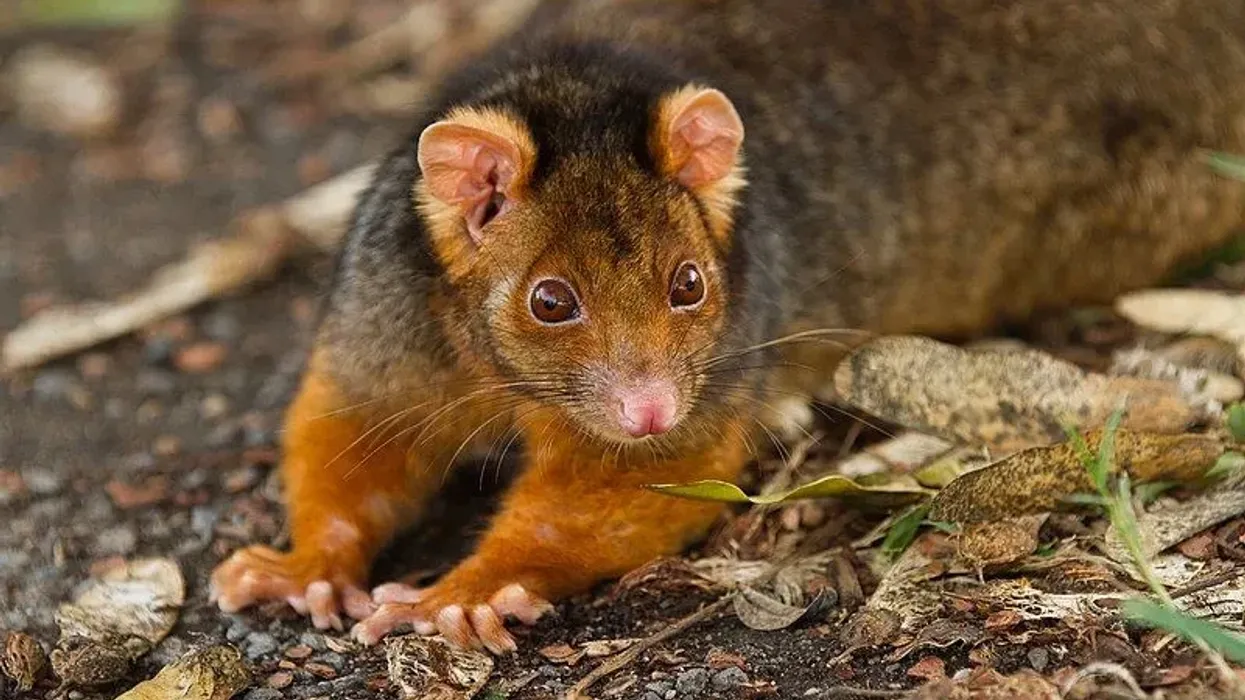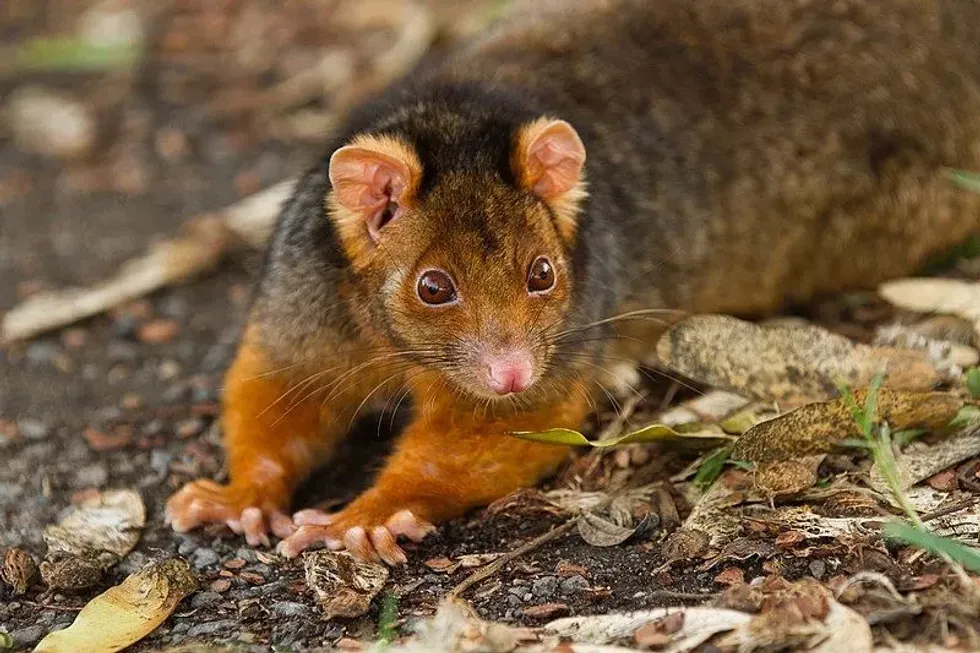The marsupial mole is a rarely known or seen burrowing animal, who lives underground. There are two species of marsupial mole, southern marsupial mole, and northern marsupial mole.
They are mostly found in Australia, particularly in Western Australia, South Australia, and the northern territory of Australia. The southern marsupial mole scientific name is Notoryctes typhlops, whereas the northern marsupial mole is scientifically known as Norotyctes caurinus. The class infraclass is Marsupialia and belongs to the kingdom phylum of animals.
Their diet mainly consists of insects and vegetables. The marsupial mole eye is of little use, hidden beneath its fur, external ears, along with spade-like claws. It is commonly known as an Australian mammal, which highly specialized for a burrowing lifestyle. The behavior of these animals is quite similar to rodents or moles in general.
Marsupial moles are mammals of threatened species, mostly found in the Australian deserts since they prefer to live in sandy dunes, and places filled with sand. As burrowing mammals, they have scoop-shaped powerful front paws and spend their lives underground, and as sand is easier to dig, they have adapted to survive in the sand.
If you want to discover marsupial mole species in detail, keep reading! You should check out marsupial and mole facts too to learn more about these animals.
Marsupial Mole Interesting Facts
What type of animal is a Marsupial Mole?
The marsupial mole is a type of mole.
What class of animal does a Marsupial Mole belong to?
The marsupial mole belongs to the class of Mammalia.
How many Marsupial Moles are there in the world?
The population of the marsupial mole, both the captive marsupial and wild are unknown. They are rarely seen since they live secretly under the ground. But there are different types of species, including the central desert marsupial mole, southern marsupial mole, and northern marsupial mole, which are located in different regions.
Where does a Marsupial Mole live?
These mammals of Australia mostly live in the sandy desert, river flats, tropical western Australia, and Mediterranean south Australia.
What is a Marsupial Mole's habitat?
The habitat of marsupial mole mostly comprises arid Australia. They can be found in tropical rainfall areas too, and other regions where their body temperature adapts to.
Who do Marsupial Moles live with?
The marsupial moles prefer to spend their lives alone in their underground tunnel.
How long does a Marsupial Mole live?
The marsupial moles range of lifespan consists 0f two to three months.
How do they reproduce?
Very little is known regarding the reproduction behavior of marsupial moles, as there are no observations made with respect to their reproductive behavior.
The aboriginal people claim to have never seen the young of the marsupial mole Notoryctes typhlops, with no detailed information on the reproduction process of this species. But based on the female pregnant specimens along with the study of marsupial mole skeleton, the breeding season is believed to take place in November.
There is uncertainty as to how many they give birth to, but an average of one to two young are discovered in the specimens.
What is their conservation status?
In the 1900 and 1920, it was thought that several thousands of marsupial moles were traded by aboriginal people to the Afghan and European cameleers, which were prized luxuriant for their cream-yellow fur.
There is little known about the current conservational status of the marsupial moles, but the current threats of these animals have been highly speculated.
Snakes, when the moles are underground, and feral cats, foxes, dingos of moles when above ground, along with soil compaction caused by vehicles are all potential threats to the long-term survival of the marsupial moles.
Marsupial Mole Fun Facts
What do Marsupial Moles look like?
The marsupial mole is a short-in-length dense animal with a silky smooth fur attached to its skin. These animals are fluffy, little sausage-like animals.
The species has strong claws with external ears, a star nose covered in a horny shield and eyes, but no optic nerve.
A tinge of sand color can be seen in its fur by burrowing through its habitat sand area, thereby giving its body, a color that ranges from almost white to pinkish cinnamon, and rich golden red.
The marsupial moles typically have five toes on each foot and they have short and stumpy legs, along with a short tail of few centimeters in length which are covered in leathery skin with a hard knob at the end. The marsupial moles are known to resemble a platypus or other species of moles or rodents.

*Please note, this is an image of a common mole. If you have an image of a marsupial mole, please let us know at hello@kidadl.com.
How do they communicate?
How they communicate is uncertain, but some studies believe they communicate through vibration on the ground or through their body language. However, solid evidence regarding this hasn't been approved yet.
How big is a Marsupial Mole?
The average size of marsupial moles is between 4.7-6.3 in long, and with a weight of 40-60 g, which is smaller in size in comparison with the marsupial kangaroo, but slightly bigger than rodents.
How fast can a Marsupial Mole run?
Given their short and stumpy legs, they may not move fast or be able to cover a great distance. Their claws help the species to have a stronger grip of soil or sand under the ground.
How much does a Marsupial Mole weigh?
The weights of marsupial moles differ in the type of species they belong to, but generally, they weigh between 1-2.5 oz, which is 40-70 g.
What are their male and female names of the species?
Both the male and female are known as marsupial mole. There are not many differences observed between the male and female, but the only difference noticed is that the female has a bigger backward-facing pouch along with two nipples for the purpose of feeding, whereas the male store testes internally in its pouch.
What would you call a baby Marsupial Mole?
A baby or young marsupial mole is called a pup. The newborn marsupial mole is tiny in size and they are often given birth prematurely. They are fed and carried by marsupial moles in their pouches.
What do they eat?
The diet of marsupial moles includes beetles, larvae, ant eggs, and can eat vertebrates insects of all kinds, and also known to feed on vegetables and seeds as they are omnivorous animals.
Are they dangerous?
The southern marsupial moles and northern marsupial moles are of little danger to humans, except for the fact that they can ruin your lawn or garden.
Would they make a good pet?
With the marsupial mole being fluffy, soft, and having shiny fur, they would make a good pet, but considering its habitat in sand areas or under the ground, it may be quite difficult to keep them at home.
Did you know...
The marsupial moles sometimes burrow straight down their tunnels up top 3 m without any particular reason.
They are known as sand swimmers because they literally swim through the sand. The marsupial mole adaptations help them to live under the ground and sand.
An unusual fact about the Australian marsupial mole is that their body temperature can increase from 59-86 F.
When these animals are held captive while feeding, they tend to emit a squeaking sound. Also, when they rest their metabolism is very low, but it can increase up to 60 times with a burst of energy and activity when it burrows.
A group of marsupial moles is called a company, labor, or movement.
What did moles evolve from?
In the beginning, talpids evolved from shrew-like animals, and late in the Eocene in Europe, they adapted to digging. It is believed that most primitive living talpids are shrew-like moles, while the other species have adapted to the subterranean, and in certain cases, aquatic lifestyle.
Do marsupial moles have eyes?
The marsupial moles have eyes that are vestigial, with no optical nerves. They are generally blind animals.
Here at Kidadl, we have carefully created lots of interesting family-friendly animal facts for everyone to discover! Learn more about some other mammal including chipmunk, or ringtail possum.
You can even occupy yourself at home by drawing one on our marsupial mole coloring pages.
*Please note, the main image is of a ringtail possum that bears similarities to the marsupial mole. If you have an image of a marsupial mole, let us know at hello@kidadl.com.









